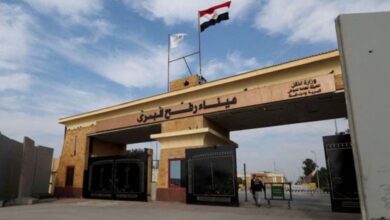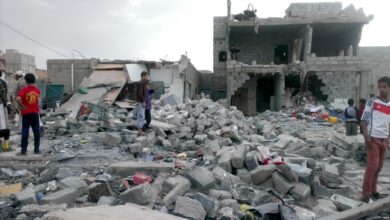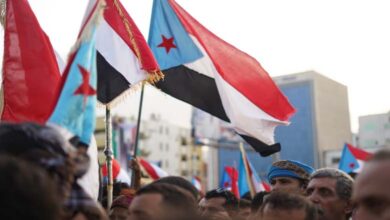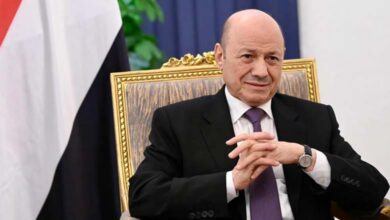Blood Alliance: New Deal Between Houthis and Al-Qaeda to Destabilize Liberated Areas
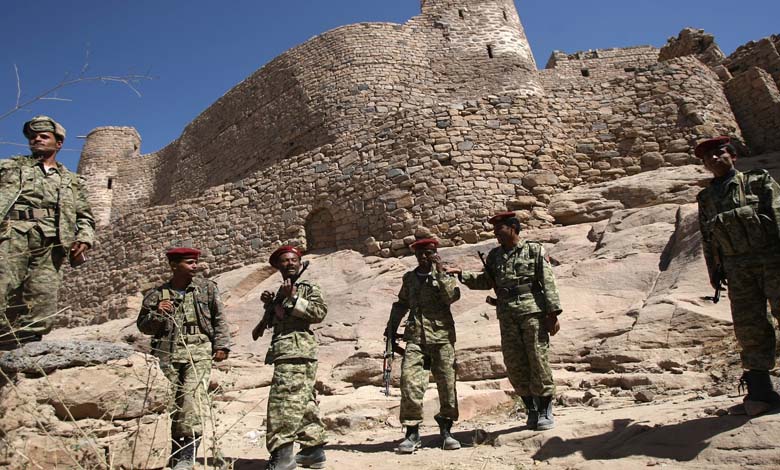
Ten years have passed since a crime committed by Al-Qaeda against Yemeni soldiers shook Yemen and the world at the time. This event has resurfaced with a new deal made by the “Blood Alliance.”
These days, the final touches are being put on a deal between Al-Qaeda and the Houthis, under which Al-Qaeda members involved in the slaughter of soldiers in Hadramout will be released after years of captivity.
On August 8, 2014, Al-Qaeda intercepted 14 Yemeni soldiers in Hadramout and executed them live on air, a crime that the Houthi militias exploited to garner international support for their cause, contributing to the fall of Sanaa and the invasion of other provinces.
Years after this crime, which continues to haunt Yemenis, the Houthis are seeking to conclude a deal with Al-Qaeda, which is a pliable tool in their hands, to release the terrorist organization members involved in that incident, according to Yemeni sources.
Features of the deal:
– Conducted through back channels
– Led by local mediators
– Expected to be completed soon
– Includes the release of terrorist elements involved in the slaughter of soldiers in Hadramout
– Includes joint coordination to carry out complex attacks to destabilize liberated areas and the region
– The agreement includes a ransom for the Houthis
– Includes the release of Yemeni and foreign terrorists, including senior figures of the extremist organization
Key individuals included in the deal:
– Some terrorists held in the security and intelligence prison located on Sixty Street in Sanaa
– Al-Qaeda leader Abdullah Khaled Al-Saiari, also known as Abu Hamza Al-Sharuri
– Salah Salem Al-Saiari
– Muflih Yaslam Al-Saiari
– Shuja Mohammed Al-Salami
Al-Saiari Abu Hamza, who was arrested by Yemeni security in October 2014, is one of the key leaders who worked alongside Al-Qaeda leader Jalal Baleedi, who was killed in a US drone strike in 2016.
Continuous Deals
Despite the heinous terrorist crime that shocked local and international public opinion with the slaughter of soldiers, the Houthi militias do not hesitate to make deals with terrorist organizations such as Al-Qaeda and ISIS.
Since the invasion of Sanaa in late 2014, the Houthi militias have released more than 400 leaders and members of Al-Qaeda and ISIS, most of whom were imprisoned by the state, between February and April 2020, including:
– Abdulrahim Al-Absi
– Ahmed Qahtan
– Al-Qarn Mahfoudh Al-Qarn
– Hisham Ramada
– Abdullah Al-Hibari
– Mulhi Ahmed Jamil
– Mohsen Al-Askari
– Asam Al-Dhib
– Majid Abdullah Sand
The information indicates that the Houthi militias, as part of their strategy, seek to maintain the Al-Bayda province as a last refuge for the reconstruction of the collapsed Al-Qaeda organization after a series of strikes in liberated provinces, having recently lost its main strongholds in Abyan and Shabwa to southern forces and Yemeni government troops.
Al-Qaeda has benefited from Houthi facilities and transformed Al-Bayda into a center for managing its internal and external terrorist operations, including sending dozens of terrorist elements to liberated provinces, among them:
– Majid Ahmed Saleh Al-Salami
– Bassam Mohammed Al-Hakimi
– Issam Al-Ba’dani
– Osama Mansour Al-Qasimi
– Jamal Abdo Al-Qamadi
– Mohammed Mansour Al-Arifi
– Zayed Al-Asadi
– Ali Yahya Al-Hakimi
– Saad Farhan
– Alaa Youssef Al-Qasir
– Ibrahim Abdullah Atiq
– Amin Abdullah Jaafar
– Bilal Al-Hababi
– Hashem Mohammed Kabea
These details were confirmed by a report from legitimate Yemeni security agencies, presented to the Security Council, revealing evidence of increasing coordination and cooperation between the Houthis, Al-Qaeda, and ISIS, extending from exchanges of prisoners to joint field operations.
Al-Qaeda and ISIS members pledged to mobilize in favor of the Houthi militias, who honored Al-Qaeda leaders for their services, including granting Aref Majli the tribal shield in early December 2021 and appointing him as deputy governor of Sanaa for recruiting fighters from the group. He was one of 23 terrorists who escaped from political security prison (Yemeni intelligence) in 2006.
Observers believe that the international community is monitoring and realizing the terrorist threat resulting from the convergence of interests between the Houthi militias and Al-Qaeda after the Houthis released group members, including those involved in the bombings of the USS Cole destroyer and the French oil tanker Limburg.
The Houthis also supported Al-Qaeda with thermal missiles, drones, and reconnaissance equipment, with talk of joint coordination to carry out complex attacks to destabilize the region and international peace and security, in parallel with the escalating Houthi attacks against commercial ships, according to the same source.


